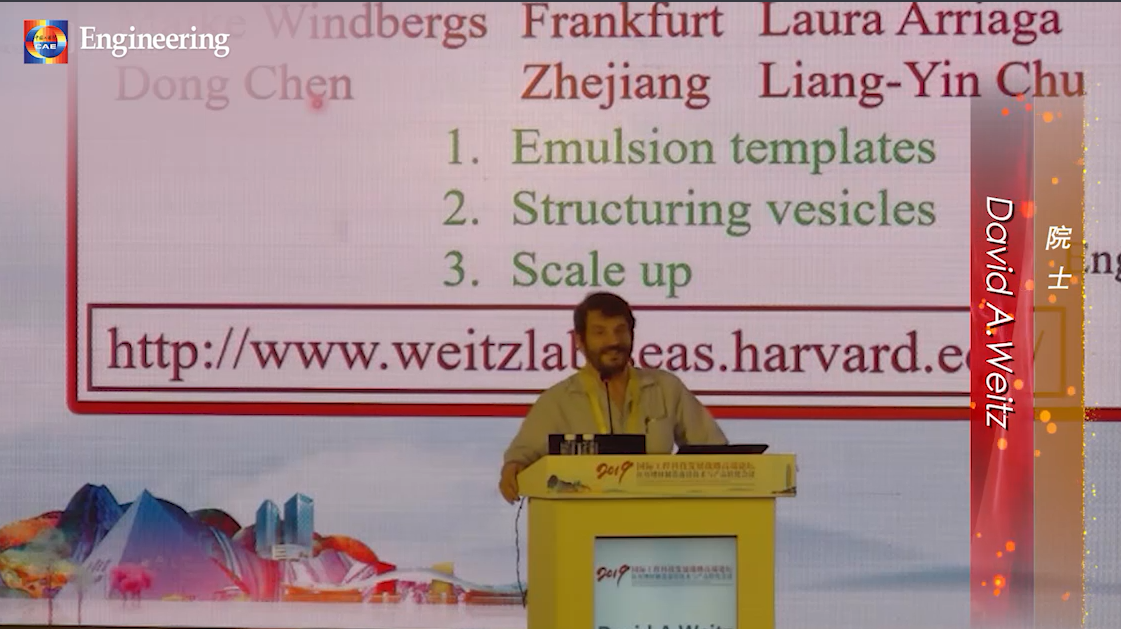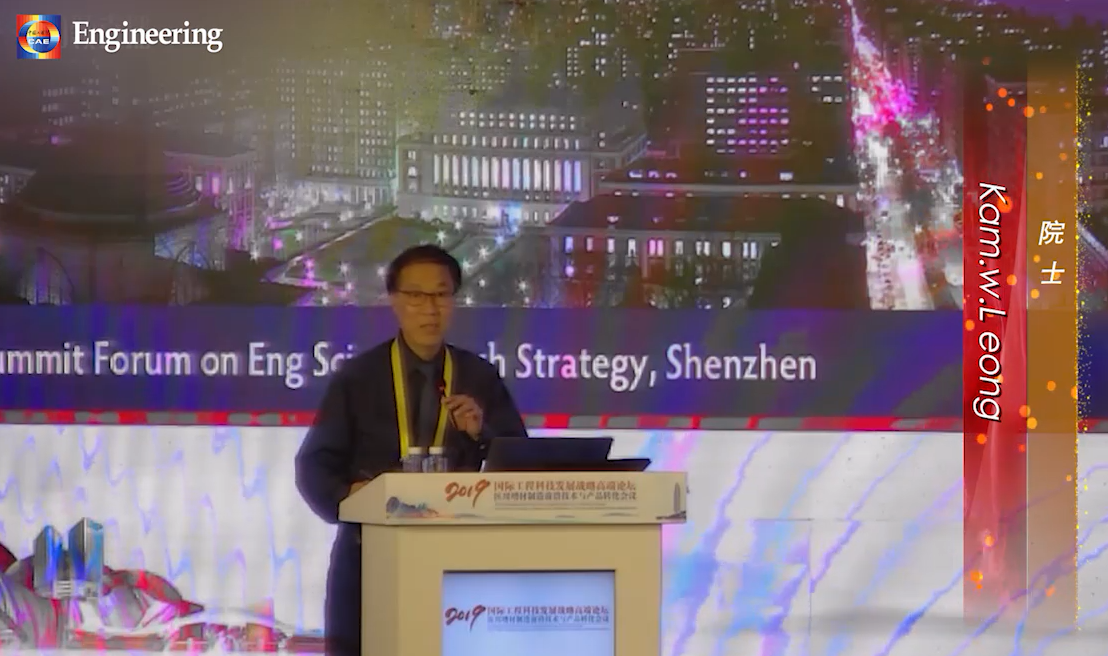检索范围:
排序: 展示方式:
Digital microfluidics: A promising technique for biochemical applications
He WANG, Liguo CHEN, Lining SUN
《机械工程前沿(英文)》 2017年 第12卷 第4期 页码 510-525 doi: 10.1007/s11465-017-0460-z
Digital microfluidics (DMF) is a versatile microfluidics technology that has significant application potential in the areas of automation and miniaturization. In DMF, discrete droplets containing samples and reagents are controlled to implement a series of operations via electrowetting-on-dielectric. This process works by applying electrical potentials to an array of electrodes coated with a hydrophobic dielectric layer. Unlike microchannels, DMF facilitates precise control over multiple reaction processes without using complex pump, microvalve, and tubing networks. DMF also presents other distinct features, such as portability, less sample consumption, shorter chemical reaction time, flexibility, and easier combination with other technology types. Due to its unique advantages, DMF has been applied to a broad range of fields (e.g., chemistry, biology, medicine, and environment). This study reviews the basic principles of droplet actuation, configuration design, and fabrication of the DMF device, as well as discusses the latest progress in DMF from the biochemistry perspective.
关键词: digital microfluidics electrowetting on dielectric discrete droplet biochemistry
《化学科学与工程前沿(英文)》 页码 1643-1650 doi: 10.1007/s11705-022-2201-z
关键词: microcapsule emulsion microfluidics selective permeation stimuli-triggered release
医用增材制造领域中的微流控技术 Review
王洁, 邵长敏, 王月桐, 孙凌云, 赵远锦
《工程(英文)》 2020年 第6卷 第11期 页码 1244-1257 doi: 10.1016/j.eng.2020.10.001
增材制造是食品、制药、医学和机械加工等领域的一种重要生产技术。得益于增材制造快速、低成本和可定制化的加工特性,医学增材制造推动了医疗器械、医学假体和临床移植物等领域的发展。在此背景下,高通量以及结构和组分把控精准等优势使微流控技术在医用增材制造领域显露头角,且已被应用于药物开发、组织工程和器官芯片的构建。本文综述了近年来微流控技术在医用增材制造领域的研究进展。首先,针对不同结构的液滴和纤维模板的构建,评估了基于微流控技术的医用增材制造的独特优势;其次,介绍了微流控技术在细胞定向、三维细胞培养、体外组织构建和细胞疗法方向的应用现状;最后,讨论了基于微流控技术的医用增材制造面临的挑战及其发展前景。
Microfluidic production of liposomes through liquid–liquid phase separation in ternary droplets
《化学科学与工程前沿(英文)》 2022年 第16卷 第6期 页码 1017-1022 doi: 10.1007/s11705-021-2118-y
关键词: microfluidics liposomes ternary droplets phase separation
基于微流控工程的高强力学性能蛋白纤维 Review
孙静, 陈静思, 刘凯, 曾洪波
《工程(英文)》 2021年 第7卷 第5期 页码 615-623 doi: 10.1016/j.eng.2021.02.005
21世纪以来,研究者对轻质和高强力学性能的天然蜘蛛丝、蚕丝纤维投入了大量研究。受此研究启发,诸多人工纺丝技术(湿法纺丝、干法纺丝、电纺等)被先后开发,并用以制造坚固的蛋白纤维。然而,传统纺丝手段对所制纤维的控制能力较差。针对此问题,微流控技术已与这些技术完成良好的结合,实现了以精心设计的方式制造生物纤维,且具有操作简单和成本效益的特点。通过控制微流体通道的类型、大小、流速和剪切力,可以精确调节所制造纤维的机械行为。该技术已成功用于制造广泛的蛋白纤维,并推进了蛋白纤维的生产效率及其在各个领域的应用。本文综述了基于微流控技术的蛋白纤维的设计及制造的最新进展。首先简要讨论了天然蜘蛛丝的纺丝过程和微流控技术的纺丝过程。进而,着重讨论了通过微流控技术再生的蛋白纤维的制造及其力学性能,接着讨论了重组蛋白纤维。此外,对其他来源的蛋白纤维也进行了详细回顾。最后,对制造蛋白纤维的微流控技术的发展进行了简要总结与展望。
Microfluidics for cell-cell interactions: A review
Rui Li,Xuefei Lv,Xingjian Zhang,Omer Saeed,Yulin Deng
《化学科学与工程前沿(英文)》 2016年 第10卷 第1期 页码 90-98 doi: 10.1007/s11705-015-1550-2
关键词: microfluidic chip co-culture cell-cell interactions review
基于液滴微流控的分级结构反蛋白石多孔支架用于仿生三维细胞共培养 Article
邵长敏, 刘羽霄, 池俊杰, 叶方富, 赵远锦
《工程(英文)》 2021年 第7卷 第12期 页码 1778-1785 doi: 10.1016/j.eng.2020.06.031
三维(3D)细胞培养具有更好地模拟天然组织特异性的优势,在药物开发、毒性测试和组织工程中发挥着重要作用。然而,现有的3D细胞培养的支架或微载体通常尺寸有限,并且在模拟生物体内血管复合体方面表现不佳。因此,本研究提出了一种通过简单的微流控方法制备的新型分级结构反蛋白石多孔支架,用于促进3D细胞共培养。该支架是基于微流控乳液液滴模板和惰性聚合物聚合的复合概念构建的。研究结果表明,该支架能够保证细胞培养过程中的营养供给,从而实现大面积的细胞培养。此外,通过在该支架中连续种植不同的细胞,本文还开发了内皮细胞包裹肝细胞的3D细胞共培养系统,用于构建功能化组织。研究结果表明,该支架用于细胞共培养系统,有助于维持肝细胞特定的体内功能。该分级结构反蛋白石多孔支架为3D细胞培养甚至仿生组织的构建奠定了基础。
Modeling and simulation of droplet translocation and fission by electrowetting-on-dielectrics (EWOD)
Nathan HOWELL, Weihua LI
《机械工程前沿(英文)》 2010年 第5卷 第4期 页码 376-388 doi: 10.1007/s11465-010-0104-z
关键词: electrowetting-on-dielectrics (EWOD) electrowetting microfluidics droplet translocation droplet fission Flow3D dielectric constant
生物细胞的旋转——基本原理及应用 Review
Tao Tang, Yoichiroh Hosokawa, Takeshi Hayakawa, Yo Tanaka, Weihua Li, Ming Li, Yaxiaer Yalikun
《工程(英文)》 2022年 第10卷 第3期 页码 110-126 doi: 10.1016/j.eng.2020.07.031
细胞旋转是现代生物科学中最重要的细胞操作技术之一,不仅允许从任意角度观察细胞,而且还简化了分析细胞力学特性、表征细胞生理学和进行显微手术的程序。在广泛的学术和工业应用中,已经报道了许多细胞旋转的方法。其中,最受欢迎的是基于微型机器人的直接接触控制和基于场的非接触方法(如光场、磁场、电场、声场和流体动力场方法)。本文首先总结了这六大类方法的基本机制、优点和缺点,然后详细讨论了它们的区别和局限性。本文旨在缩短每种方法之间的差距,并说明细胞旋转领域目前的研究进展及未来前景。
Microfluidic dual loops reactor for conducting a multistep reaction
Si Hyung Jin, Jae-Hoon Jung, Seong-Geun Jeong, Jongmin Kim, Tae Jung Park, Chang-Soo Lee
《化学科学与工程前沿(英文)》 2018年 第12卷 第2期 页码 239-246 doi: 10.1007/s11705-017-1680-9
关键词: microfluidics multistep reaction rotary mixing nanoparticle
A review on emulsification via microfluidic processes
Yichen Liu, Yongli Li, Andreas Hensel, Juergen J. Brandner, Kai zhang, Xiaoze Du, Yongping Yang
《化学科学与工程前沿(英文)》 2020年 第14卷 第3期 页码 350-364 doi: 10.1007/s11705-019-1894-0
关键词: microfluidics emulsification capillary number droplet breakup

David A.Weitz:Soft Functional Materials Prepared by Microfluidics(2019年6月15日)
David A.Weitz(院士)
2021年01月20日
关键词: 医学
Ionically Imprinting-Based Copper (Ⅱ) Label-Free Detection for Preventing Hearing Loss Article
Huan Wang, Hui Zhang, Xiaoli Zhang, Hong Chen, Ling Lu, Renjie Chai
《工程(英文)》 doi: 10.1016/j.eng.2023.09.001
Copper is a microelement with important physiological functions in the body. However, the excess copper ion (Cu2+) may cause severe health problems, such as hair cell apoptosis and the resultant hearing loss. Therefore, the assay of Cu2+ is important. We integrate ionic imprinting technology (IIT) and structurally colored hydrogel beads to prepare chitosan-based ionically imprinted hydrogel beads (IIHBs) as a low-cost and high-specificity platform for Cu2+ detection. The IIHBs have a macroporous microstructure, uniform size, vivid structural color, and magnetic responsiveness. When incubated in solution, IIHBs recognize Cu2+ and exhibit a reflective peak change, thereby achieving label-free detection. In addition, benefiting from the IIT, the IIHBs display good specificity and selectivity and have an imprinting factor of 19.14 at 100 lmol∙L–1. These features indicated that the developed IIHBs are promising candidates for Cu2+ detection, particularly for the prevention of hearing loss.
关键词: Structural color Microfluidics Ionic imprinting Label-free detection Hearing loss
Hongzhan Di, Gregory J. O. Martin, Dave E. Dunstan
《化学科学与工程前沿(英文)》 2021年 第15卷 第3期 页码 552-561 doi: 10.1007/s11705-020-1962-5
关键词: particle deposition crossflow filtration microfluidics confocal microscopy

Leong:Can Microfluidics Address the Biomanufacturing Challenge of Drug-Gene-Celltherap(2019年6月15日)
Kam. W. Leong(院士)
2021年01月20日
关键词: 医学
标题 作者 时间 类型 操作
Digital microfluidics: A promising technique for biochemical applications
He WANG, Liguo CHEN, Lining SUN
期刊论文
Porous ultrathin-shell microcapsules designed by microfluidics for selective permeation and stimuli-triggered
期刊论文
Microfluidic production of liposomes through liquid–liquid phase separation in ternary droplets
期刊论文
Microfluidics for cell-cell interactions: A review
Rui Li,Xuefei Lv,Xingjian Zhang,Omer Saeed,Yulin Deng
期刊论文
Modeling and simulation of droplet translocation and fission by electrowetting-on-dielectrics (EWOD)
Nathan HOWELL, Weihua LI
期刊论文
生物细胞的旋转——基本原理及应用
Tao Tang, Yoichiroh Hosokawa, Takeshi Hayakawa, Yo Tanaka, Weihua Li, Ming Li, Yaxiaer Yalikun
期刊论文
Microfluidic dual loops reactor for conducting a multistep reaction
Si Hyung Jin, Jae-Hoon Jung, Seong-Geun Jeong, Jongmin Kim, Tae Jung Park, Chang-Soo Lee
期刊论文
A review on emulsification via microfluidic processes
Yichen Liu, Yongli Li, Andreas Hensel, Juergen J. Brandner, Kai zhang, Xiaoze Du, Yongping Yang
期刊论文
David A.Weitz:Soft Functional Materials Prepared by Microfluidics(2019年6月15日)
David A.Weitz(院士)
2021年01月20日
会议视频
Ionically Imprinting-Based Copper (Ⅱ) Label-Free Detection for Preventing Hearing Loss
Huan Wang, Hui Zhang, Xiaoli Zhang, Hong Chen, Ling Lu, Renjie Chai
期刊论文
Characterization of particle deposition during crossflow filtration as influenced by permeate flux and crossflow velocity using a microfluidic filtration system
Hongzhan Di, Gregory J. O. Martin, Dave E. Dunstan
期刊论文
Leong:Can Microfluidics Address the Biomanufacturing Challenge of Drug-Gene-Celltherap(2019年6月15日)
Kam. W. Leong(院士)
2021年01月20日
会议视频








